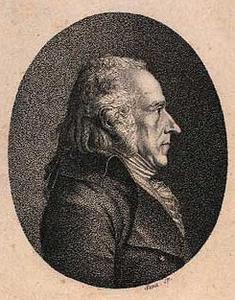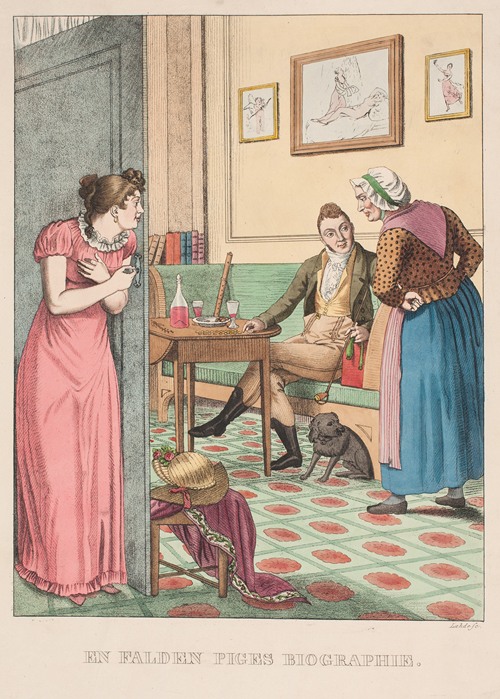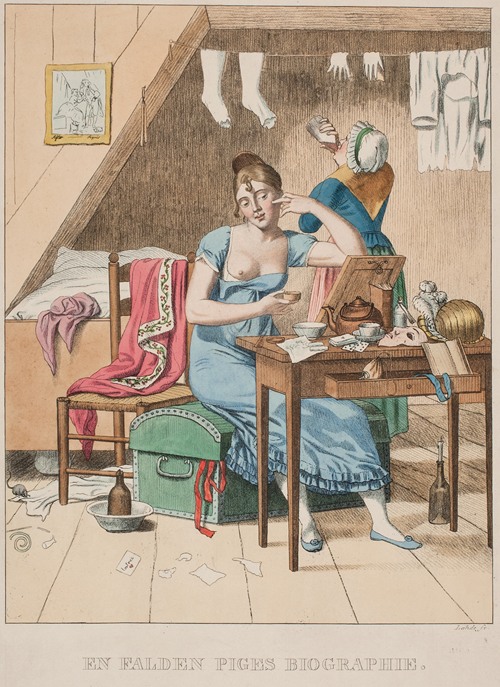

Gerhard Ludvig Lahde
Gerhard Ludvig Lahde, usually referred to as G. L. Lahde, was a Danish printmaker and publisher. He is remembered for his hand-coloured, slightly caricatured series of prints of traditional costumes created in collaboration with Johannes Senn as well as depictions of major historic events such as the Copenhagen Fire of 1795 and the Bombardments of Copenhagen in 1801 and 1807. He also created many portraits of prominent people of his time.
Lahde was born in Bremen, the son of a tailor. After studying seven years in the local latin school, he went to Kiel where he completed an apprenticeship as a goldsmith. With ambitions to become an artist, together with Cladius Detlev Fritzsch, he then travelled to Copenhagen where he was admitted to the Royal Danish Academy of Fine Arts in 1787. He completed model school and was taught the craft of copperprint engraving by Johann Friderich Clemens. He won the small silver medal in 1790, the large silver medal in 1791 and the small gold medal in 1792. He initially worked as a goldsmith to pay for his education but without much economic success and later turned to drawing and engraving portraits. Although his original plan was to return to Bremen and he received some economic support from his home town to do so, he decided instead to stay in Copenhagen where he was naturalized in 1792.
Lahde's academic career was without much success. In 1793, he tried to obtain status as agrée at the Academy with an engraving based on Jens Juel's portrait of August Hennings and in 1796 again with an engraving based on Anton Graff's portrait of the Duke of Augustenborg.
He had more success commercially as a portrait painter and was appointed Engraver to the Danish Court in 1799. In 1803 he went abroad on a grant from Fonden ad usus publicos. In 1805 he purchased a property on Gothersgade from where he ran a successful business. Christoffer Wilhelm Eckersberg and Johannes Senn, who were The young artists at the time, lived in the building and worked for him.




